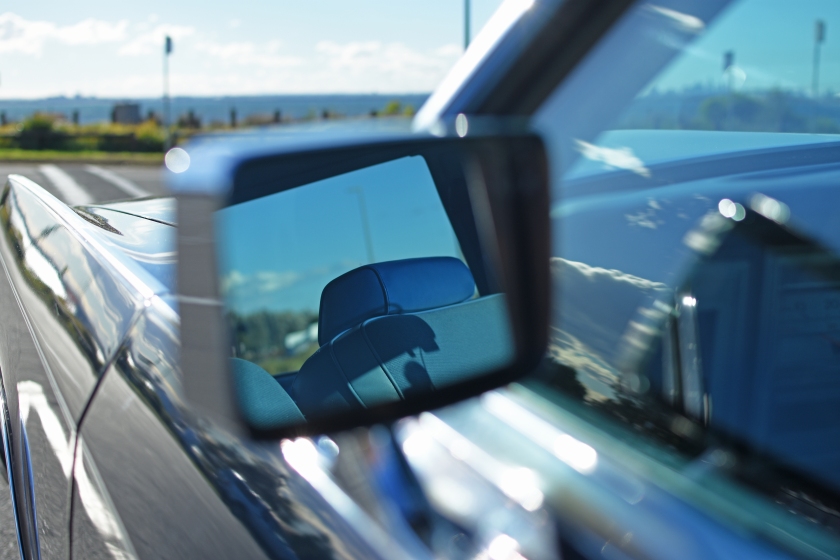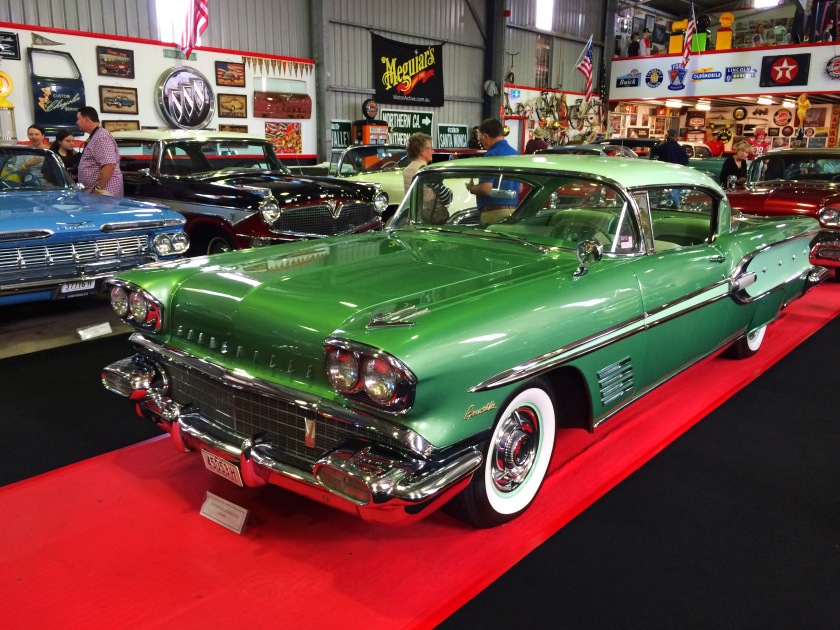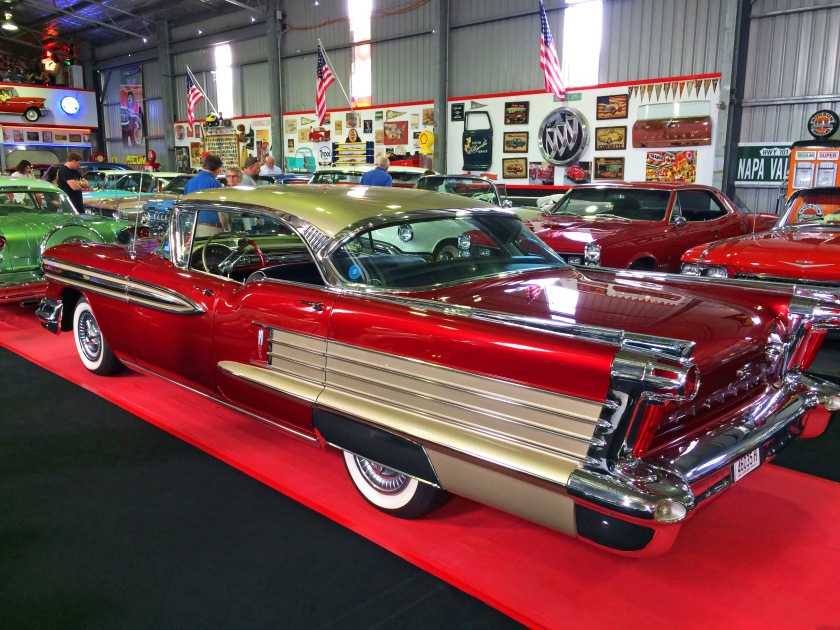
Happy Birthday!!! Sonny Corleone (no, the other one) turns 40.
Just to be clear, I’m not talking Mario Puzo’s ill-fated member of the fictional crime family but my 1978 Lincoln Continental Town Car. So the first issue to address is…..why the hell Sonny Corleone?
He’s (and here I’m referring to the car) that’s kinda guy. A loveable lug. Powerful as much as powerfully built, dependable and loyal. Protective of all who come in contact with him but sensitive enough to show a girl a good time (at a wedding, no less). Got it? Good.

On Thursday 15 June 1978, Sonny Corleone was welcomed to the world, rolling off the Ford assembly line in Wixom, MI, to the cheers of hundreds of assembled factory workers. There was portent in the air; they knew this was something special, despite this plant having largely concentrated on Lincolns since it opened in 1957 (and it was a Town Car that was the last off the assembly line when the facility closed in 2007).
In reality, the Lincoln was shipped off to Rotman Lincoln-Mercury, a dealership in Maquokta, Iowa, about 300 kilometres west of Chicago. But I like to think that Sonny had a parallel existence in some other reality, cruising the streets of New York City as a treasured member of a prestige limousine service. His dayswould be blocked out by stockbrokers and other Wall Street types, pre-generational Masters of the Universe, hoovering up lines of cocaine as they shuttled around town. The nights were blocked out with celebrities, models, disco dollies and more executive types who, depending on their proclivities, travelled from high-end restaurants to Studio 54, Plato’s Retreat or any of a number of bath houses where cleanliness was not a prerequisite.

If you were wondering just what these passengers might have been listening to within Sonny’s encompassing velvet confines, here’s just such a list. OK, maybe it’s more what I was and would have been listening to during the same period but same same.
In terms of music, 1978 is one of my favourite years, just as the 1970s is one of my favourite decades. It falls within the Golden Era of disco, rich with lush orchestrations, before the 80s ushered in synthesizers. So we’ll start the list with the most obvious:
1/ The Tramps – Disco Inferno: Although initially released in 1976 (when it reached Number One on the Billboard Dance charts), it became an even bigger hit in 1978 with a 10 minute 54 second version via the Saturday Night Fever soundtrack. This time around, it made the mainstream charts, reaching Number 11 on the Billboard Hot 100. Coincidentally, I’ve previously noted that I want this song played at my funeral. I anticipate a cremation. Burn, baby, burn.
2/ Bee Gees – How Deep Is Your Love: Again from the biggest movie of 1977-78. It’s difficult to choose just one Bee Gees song off this amazing double album; maybe More Than A Woman, although it wasn’t released as a single, or Night Fever but I’ll stick with this sensuous ballad. Interestingly, Saturday Night Fever is one of only six albums to reach sales of more 40 million. Even more interestingly, it may be one of my favourite soundtracks but it’s not necessarily my favourite disco movie; that honour would go to Thank God It’s Friday.
3/ Donna Summer – Last Dance: Speaking of which, Donna Summer was a HUGE part of my disco years; her first Casablanca single, Love To Love You Baby was in 1975, when it really started, disco-wide, for both Donna and myself. Last Dance was off the Thank God It’s Friday soundtrack, a truly great song, and historically notable for being the only disco song to ever win an Academy Award (Yes, I hear you say, Xanadu was robbed!!!!).
4/ John Paul Young – Love Is In The Air: As much as I was huge Countdown fan (as indeed anyone of a certain age was in Australia), I never saw the 30 April 1978 live broadcast of John Paul Young singing Love Is In The Air. I worked Thursdays to Sundays at an inner city Sydney disco so I didn’t see the first televised performance (or, at least, its most celebrated) but it was impossible to miss this Vanda & Young-penned musical juggernaut, either when it was demolishing music charts around the world (Top 5 through much of Europe, Number 3 in Australia and topped Billboard US’s Adult Contemporary Charts) or since then. I love it still.
5/ Village People – Macho Man: 1978 was the year of two of the Village People’s biggest hits – Macho Man and Y.M.C.A., but it’s the later that stands out. Number One around the world, except for the US where Rod Stewart’s Do Ya Think I’m Sexy blocked it from the top spot. As the song surged up the charts, things became more heated than a bunch of Village People fans in a YMCA sauna when the organisation threatened to sue for breach of copyright. Things were “settled” out of court and the YMCA later officiallydeclared it a “positive statement” about the YMCA. In recent times, co-writer (with VP producer and Svengali, Jacques Morelli) and lead singer, Victor Willis, won his long-running legal battle to have his copyrights restored to him; a consequence is that Willis is now touring with a reconstructed VP without any of the other surviving original group members.
6/ Rod Stewart – Do Ya Think I’m Sexy: Speaking of which, this marks Rockin’ Rod crossing to the dark side, cashing in on disco, as his traditional fans accused him. To anyone who frequented discos or nightclubs (or anywhere really, in the late 70s), it struck a chord in describing the machinations behind the boy-meets-girl scenario and what goes down (no pun intended, no, really) afterwards.
7/ Kate Bush – Wuthering Heights: While I missed the clip on Countdown (like many Australian hits, it was due largely to exposure from this one program), I would have seen it on Donnie Sutherland’s Sounds show (wherever I woke up on Saturday mornings). Like everything else on my list, I love it still although I’m no great fan of Kate’s other work. Honourable mention to another version that populates my iPod playlist; from the UK’s Puppini Sisters, which presents the song as the Andrews Sisters would interpret it.
8/ Bob Welch – Ebony Eyes: Just to prove I’m not entirely disco obsessed, here’s some West Coast rock. On the back of a splendid video clip, it was a much bigger hit in Australia than the US (heeeelloooooo again, Countdown). Welch is probably best known for his time with Fleetwood Mac (part of the ninth line-up along with Mick Fleetwood and the McVies); he left the band in 1974, to be replaced by Stevie Nicks and Lindsay Buckingham. The rest, as they say in showbiz, is history. He then formed the under-rated Paris, then followed with a couple of solo albums. The first, French Kiss, from which Ebony Eyes is from, shipped platinum, the others consistently fewer. I still play French Kiss, and the Paris albums, and none of Bob’s Mac work. Go figure.
9/ Dragon – Are You Old Enough: Technically, I could include April Sun In Cuba on this list, although it was released in 1977; that was off the Running Free album which was still yielding singles into the following year. But I’ll side-step the inevitable whinges and choose Are You Old Enough instead. Typical boppy, poppy sunshine rock, I’ll always associate the late 70s Dragon output with lazy summer days, which stretched into lazy spring, summer and autumn months working on my tan at Tamarama or Lady Bay beaches. Dragon was Marc Hunter as much as he was the very essence of the late 70s sunshine lifestyle and he died way too young. Despite their best efforts, I just can’t warm to Dragon without Marc (just as the Doors and INXS could never replicate the magic after losing their lead singers)..
10/ Bruce Springsteen – Because The Night: This choice will court some controversy but demonstrates how rich our legacy of old music has become over the intervening years, repackaging classic albums with bonus and archival material being the norm these days. Strictly speaking, the only version of Because The Night that Sonny would have known in 1978 would be the Patti Smith version; early drafts of this song were written by The Boss and recorded during June and July of 1977, for the Darkness At The Edge Of Town sessions. Bruce wasn’t entirely satisfied with what he had (although the melody and chorus were constants) and it was eventually dropped. Smith, who was recording at an adjoining studio, completed the song and recorded it; it became her biggest US chart hit. According to the exhaustive www.springsteenlyrics.com, the official studio version that Bruce recorded for Darkness had Smith’s lyrics, while alternate versions digressed quite sharply in attempting to imprint his blue collar ethos. He started playing it live, with his own lyrics, during the Darkness tour. It was included on Live! 1975-85 (1986) but the alternate version released in The Promise (2010), which collected Darkness session tracks, has Smith’s lyrics. So maybe we should just stick with Patti Smith.
11/ Andy Gibb – Shadow Dancing: In truth, it should be I Just Want To Be Your Everything (my favourite Andy Gibb track) but that came out in 1977. Gibb, younger brother of Barry, Robin and Maurice, renowned collectively as the Bee Gees, had a fitful early careerwhich didn’t take off until the mid-70s when Robert Stigwood, at that time his brothers’ manager, also took on Andy. The Bee Gees’ involvement in his debut album, from playing to providing songs, worked the right kind of magic. Two Number One singles, including Everything, resulted. In April 1978, the second album, Shadow Dancing, was released with the single of the same name also going to Number One. His tragic death at the age of 30 tinges these recordings with such sadness. Let’s remember him as he was.
12/ Bob Seger And The Silver Bullet Band – Old Time Rock And Roll: Right through the 1970s, it seemed as if most of the music America wanted to listen to was coming out of a virtually unknown part of northern Alabama called Sheffield. Four sessions musicians, known collectively as the Swampers, left employment at the renowned Fame Studios (which had been churning out R&B hits since the 1960s) nearby and set up their own facility, the Muscle Shoals Sound Studio. While R&B continued to be an important revenue stream, they also extended into mainstream artists such as the Rolling Stones (tracks from Exile On Main Street), Cher, Paul Simon, Rod Stewart, Lynyrd Skynyrd and Bob Dylan. Detroit rocker Bob Seger recorded a number of tracks there including one of his most enduring, Old Time Rock and Roll. While Bob’s Silver Bullet Band is credited on the album, the track itself was originally a demo produced and played on by the Swampers themselves for a co-write from George Jackson and Thomas E Jones III. While Bob tried recording the song with both the Bullet and the Swampers, he wasn’t happy with the result; in the end, he laid his own vocals over the top of the demo. And although Bob amended some of the original lyrics, he saw it more as filler than serious chart potential and passed on a song writing co-credit; royalties flow straight back to Muscle Shoals. Bet Bob is still kicking himself.

13/ Steely Dan – Deacon Blues: We unquestioningly accept the rock’n’roll aesthetic; slim, jaded, impossibly attractive young gods, prowling the manicured meadows from centuries-old English manor houses to their stages via green rooms where magnums of French champagne and supermodel groupies await to be plucked from their respective receptacles. Walter and Donald were not rock gods. They looked pretty much the way you’d expect anybody called Walter and Donald would look in the 1970s. Except dorkier. And, please understand, I mean that in the nicest possible way. Like they were on top of calculus and were just marking time until the Atari was invented. Which, as Atari was founded in 1972 and Steely Dan stopped touring in 1974, is maybe a little closer to the truth than anybody suspected. So, as for the perks of being rock stars, when it comes to Steely Dan, the mind enters boggling territory. What would a Steelie Dan groupie even look like? Perhaps it’s best not to know. Whatever, Steely Dan were an integral part of the sound of a generation and that generation was mine. Do It Again, Rikki Don’t Lose That Number, Reelin’ In The Years, Hey Nineteen. I didn’t understand the lyrics then and still don’t. But the sound is unmistakable. Thus Deacon Blues, coming close towards the end of their chart successes, gets my 1978 nod.
With these, and so many other great songs of the 70s, Sonny cotinues – 40 years later, to rumble the bitumen, turning heads and drawing crowds wherever he goes.
Happy Birthday, Sonny. And many more to come.
© David Latta 2018





































